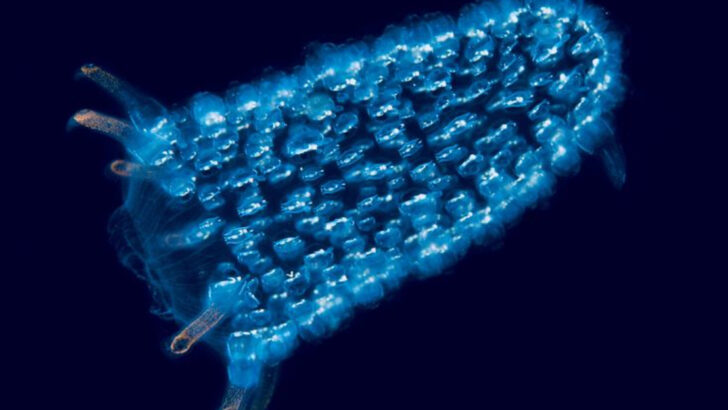Pyrosomes, often referred to as the “unicorns of the sea,” captivate the imagination with their ethereal, glowing presence in ocean waters.
These mesmerizing creatures are not just a single organism, but a colony of zooids working in harmony.
Their bioluminescent glow and unique structure make them a subject of intrigue for scientists and ocean enthusiasts alike.
In this blog post, we explore ten fascinating facts about pyrosomes, revealing the mysteries and wonders of these oceanic marvels.
Bioluminescent Glow
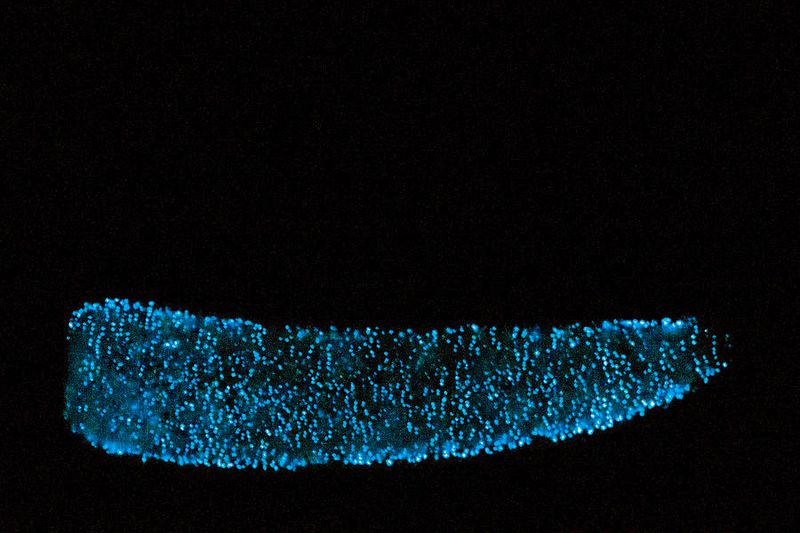
Floating through the ocean like a string of underwater lanterns, pyrosomes emit a captivating bioluminescent glow.
This natural light show is a result of chemical reactions within the colony, creating a spectacle that can be seen from afar. The glow serves as a defense mechanism, deterring predators and enchanting those who are fortunate enough to witness it.
Scientists are still unraveling the mysteries behind this phenomenon, but one thing is certain: the sight of a glowing pyrosome is unforgettable.
Colony Life
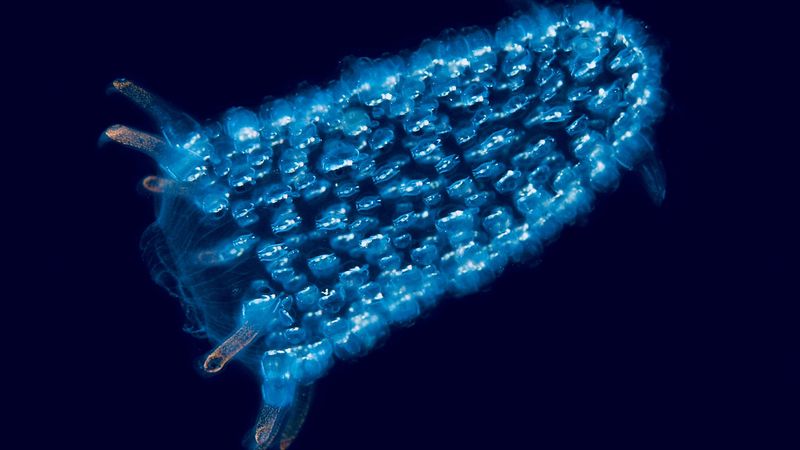
Pyrosomes are not solitary creatures, but colonies of thousands of individual zooids. Each zooid, though tiny, plays a crucial role in the colony’s survival. Together, they form a tubular structure, propelling themselves through the water via coordinated movements.
This teamwork enables them to efficiently capture food and navigate the vast ocean. The colony’s success lies in the seamless cooperation among its members, a true testament to the power of collaboration in nature.
Ocean Giants
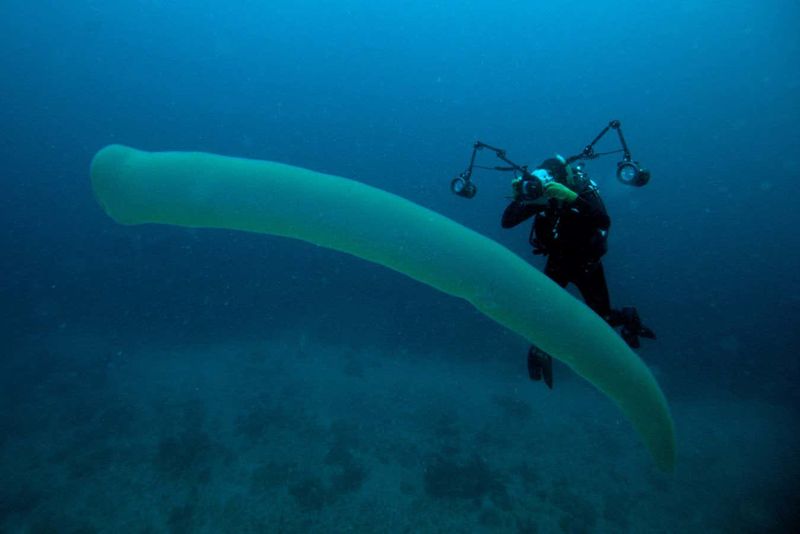
Despite their ethereal appearance, pyrosomes can grow to impressive sizes, sometimes reaching up to 60 feet in length. Imagine swimming alongside a creature as long as a school bus, gently drifting through the ocean currents.
Their size, coupled with their light-emitting capabilities, makes them a wonder to behold. These gentle giants of the sea emphasize the diversity and mystery that our oceans hold, reminding us of the vastness of the underwater world.
Rare Sightings
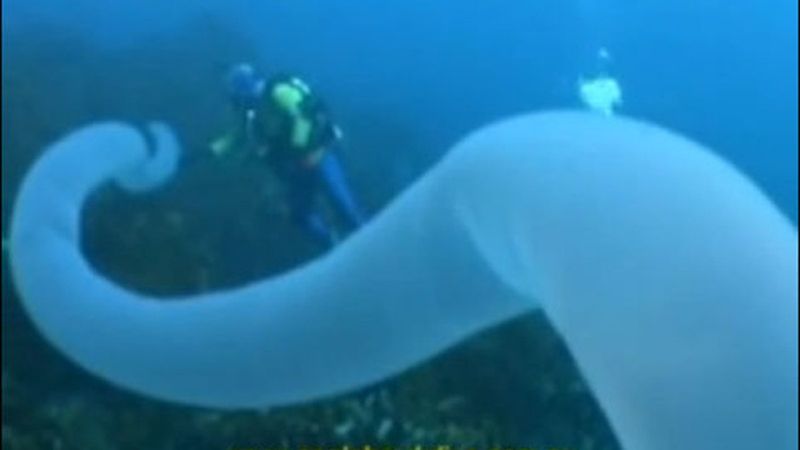
Spotting a pyrosome is a rare treat, often leaving divers and marine biologists in awe. These elusive creatures tend to inhabit deep ocean waters, only occasionally drifting to the surface. When they do, it’s a moment to cherish, as their presence is fleeting.
This rarity adds to their allure, making every encounter a unique and cherished experience. For those lucky enough to witness a pyrosome, it is a moment that lingers in the memory.
Filter Feeders
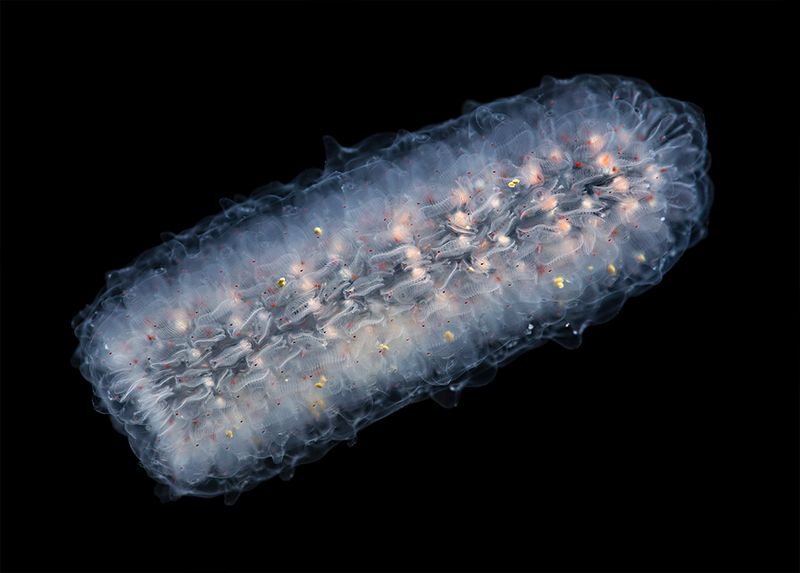
Pyrosomes play a vital role in maintaining ocean health by acting as filter feeders. They consume plankton and other small particles by drawing water through their bodies, trapping food in the process. This feeding method not only sustains the colony but also helps keep the ocean ecosystem in balance.
Their ability to filter vast amounts of water exemplifies the intricate connections within marine life, underscoring the importance of each species in the ecosystem.
Mysterious Origins
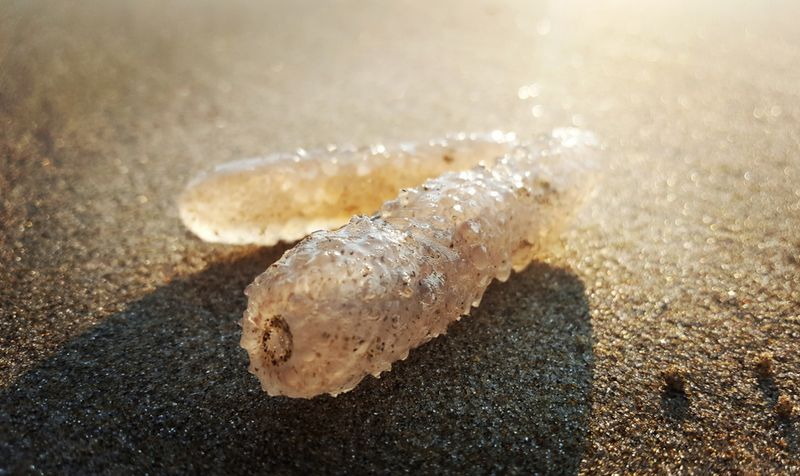
Pyrosomes have captured human imagination for centuries, often compared to mythical sea creatures in ancient lore. Their mysterious origins and otherworldly appearance have fueled stories and legends that persist to this day.
While science has unraveled some of their secrets, much remains to be discovered. This blend of mystery and reality continues to inspire wonder, as we strive to understand these enigmatic inhabitants of the deep.
Scientific Curiosity
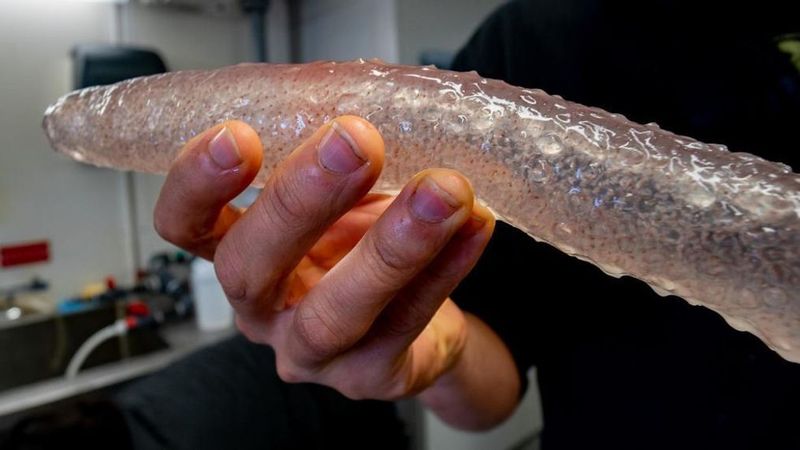
Pyrosomes have become a focal point for scientific research, drawing curiosity from experts worldwide. Their unique characteristics, such as bioluminescence and colonial lifestyle, offer insights into marine biology and the adaptability of life.
Studies aim to uncover the secrets of their existence and the roles they play in ocean ecosystems. The pursuit of this knowledge not only deepens our understanding of pyrosomes but also enhances our appreciation for the complexities of marine life.
Pyrosome Propulsion
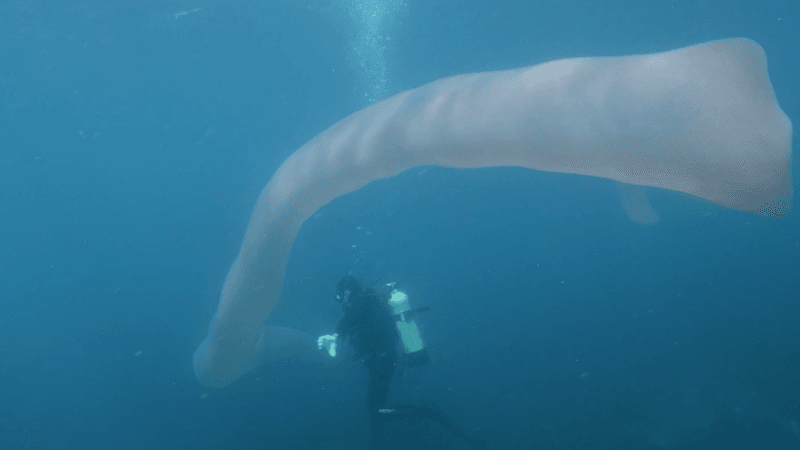
Pyrosomes, though seemingly passive, have a fascinating mode of movement. These creatures rely on coordinated water expulsion from their bodies to propel themselves. Each zooid within the colony contributes to this synchronized swimming.
This method allows pyrosomes to traverse vast oceanic expanses with ease. Their gentle gliding is akin to a slow, underwater ballet. As they move, they create minimal disturbances in the water.
This efficient propulsion makes them intriguing subjects of study for understanding marine locomotion. Did you know? Their movement mechanism inspired some innovative underwater vehicle designs.
Temperature Sensitivity
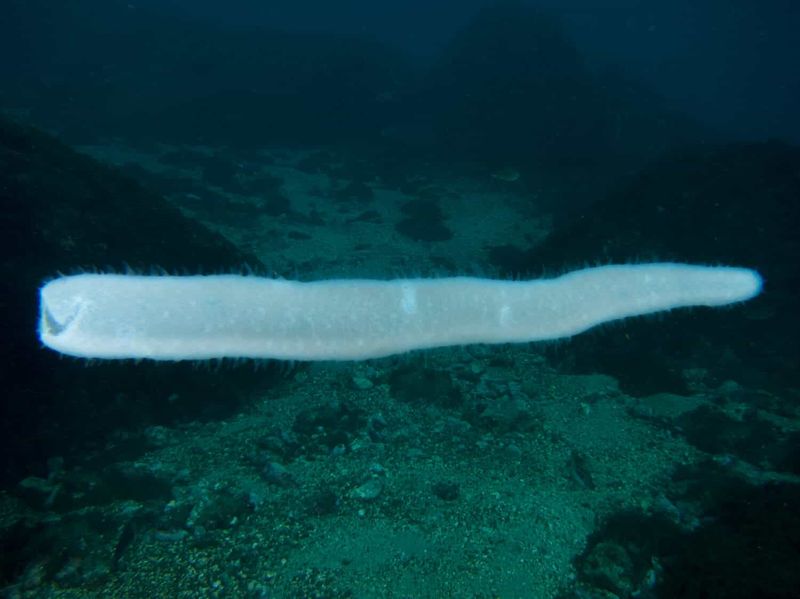
Pyrosomes exhibit remarkable sensitivity to ocean temperature. Their distribution is heavily influenced by the thermal conditions of the water.
Warmer temperatures often boost their population density, prompting swarms that can stretch for miles. Conversely, cooler waters may hinder their growth and dispersal.
This temperature reliance highlights their role as indicators of climate change. Observing pyrosome patterns can provide insights into oceanic temperature shifts. Quirky fact: Some regions experience seasonal blooms of pyrosomes, turning waters into glowing trails.
Feeding Dynamics
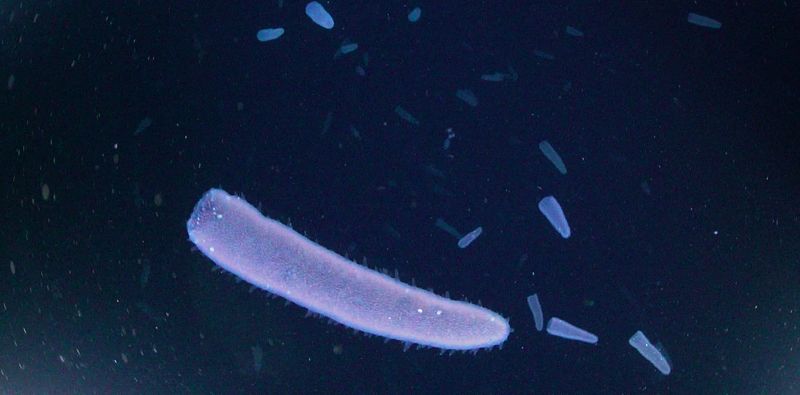
Feeding among pyrosomes is an intricate dance of collaboration. Each zooid within the colony filters plankton from the water, sharing nutrients with its neighbors.
This collective feeding approach is vital for their survival in nutrient-sparse waters. The efficiency of their feeding mechanism lies in the vast number of zooids working together.
Their filtration prowess helps maintain ecological balance in their habitats. Fun tidbit: The sheer volume of water they process is astounding, making them natural oceanic vacuum cleaners.

